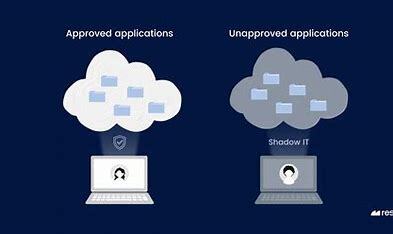SHADOW IT: HOW UNAUTHORIZED APPLICATIONS ARE PUTTING YOUR BUSINESS AT RISK
Tech Tips Microsoft Artificial Intelligence Remote Work Business Manufacturing Construction Business Continuity FAQ Cyber Insurance Apr 30, 2025 9:16:27 AM Brandon Jones 3 min read

Employees are often the greatest cybersecurity vulnerability in an organization—not just due to phishing susceptibility or weak passwords, but because they unknowingly use unapproved applications that IT teams cannot monitor or secure. This phenomenon, known as Shadow IT, has become one of the most pressing security concerns for businesses today.
What Is Shadow IT?
Shadow IT refers to any technology—including software, cloud storage, and communication tools—used within a company without IT approval. These unauthorized applications pose security risks by operating outside of established protocols, leaving businesses vulnerable to data breaches, compliance violations, and cyberattacks. Examples of Shadow IT include:
- Unregulated Cloud Storage – Employees storing sensitive work documents in personal Google Drive or Dropbox accounts.
- Unapproved Collaboration Tools – Teams adopting project management platforms like Trello, Asana, or Slack without IT oversight.
- Unauthorized Communication Apps – Workers using messaging tools like WhatsApp or Telegram on company devices instead of official communication channels.
- Unsecured AI and Automation Software – Marketing teams utilizing AI-generated content or automation tools without verifying security measures.
Why Is Shadow IT Dangerous?
IT departments cannot manage or protect applications they are unaware of, resulting in significant cybersecurity vulnerabilities, including:
1. Unsecured Data Sharing
Employees relying on personal email accounts, cloud storage, or messaging apps to transfer company information risk accidental data leaks, making it easier for cybercriminals to intercept sensitive files.
2. Lack of Security Patches
IT teams routinely update and patch software vulnerabilities in authorized applications, but unregulated tools often go unchecked, exposing organizations to cyber threats.
3. Compliance & Regulatory Violations
Industries governed by HIPAA, GDPR, PCI-DSS, or other data security regulations may face legal penalties and financial fines if unapproved applications are used improperly.
4. Heightened Malware & Phishing Threats
Employees may unknowingly download malicious applications disguised as legitimate tools, increasing exposure to ransomware, spyware, and other cyber threats.
5. Weak Authentication & Account Hijacking
Many Shadow IT applications lack proper security controls, such as multifactor authentication (MFA), making employee credentials easier for hackers to exploit.
Why Do Employees Use Shadow IT?
In most cases, employees aren't trying to bypass security—they simply seek more efficient ways to accomplish tasks. Shadow IT adoption often occurs because:
- Company-approved tools are outdated or inefficient.
- Alternative solutions help streamline workflow.
- Employees are unaware of cybersecurity risks.
- IT approval processes take too long, leading employees to find shortcuts.
Case Study: The "Vapor" App Scandal
In March, cybersecurity experts at IAS Threat Labs discovered an ad fraud operation involving over 300 malicious applications on the Google Play Store, downloaded more than 60 million times. These apps disguised themselves as utilities and lifestyle tools but were designed to display intrusive advertisements and, in some cases, phish for sensitive credentials and payment information. Once installed, they hid their icons and bombarded users with full-screen ads, rendering devices nearly inoperative.
This real-world incident illustrates how easily unauthorized applications can infiltrate devices and underscores the importance of strict IT governance and oversight.
Mitigating Shadow IT Risks
While Shadow IT is often adopted with good intentions, the risks far outweigh the benefits. Organizations must take proactive steps to mitigate security vulnerabilities, including:
- Implementing stricter IT governance to approve and monitor all applications.
- Conducting regular security audits to detect unauthorized software use.
- Educating employees on cybersecurity risks and safe technology practices.
- Streamlining IT approval processes to encourage compliance.
By prioritizing security, compliance, and employee awareness, businesses can minimize risks associated with Shadow IT and maintain strong cybersecurity defenses. Call us today and to learn about our Privileged Access Managment at 416-900-6047.
.png?width=116&height=116&name=Brandon%20office%202024%20(3).png)
Brandon Jones
CEO & Founder of Attitude IT